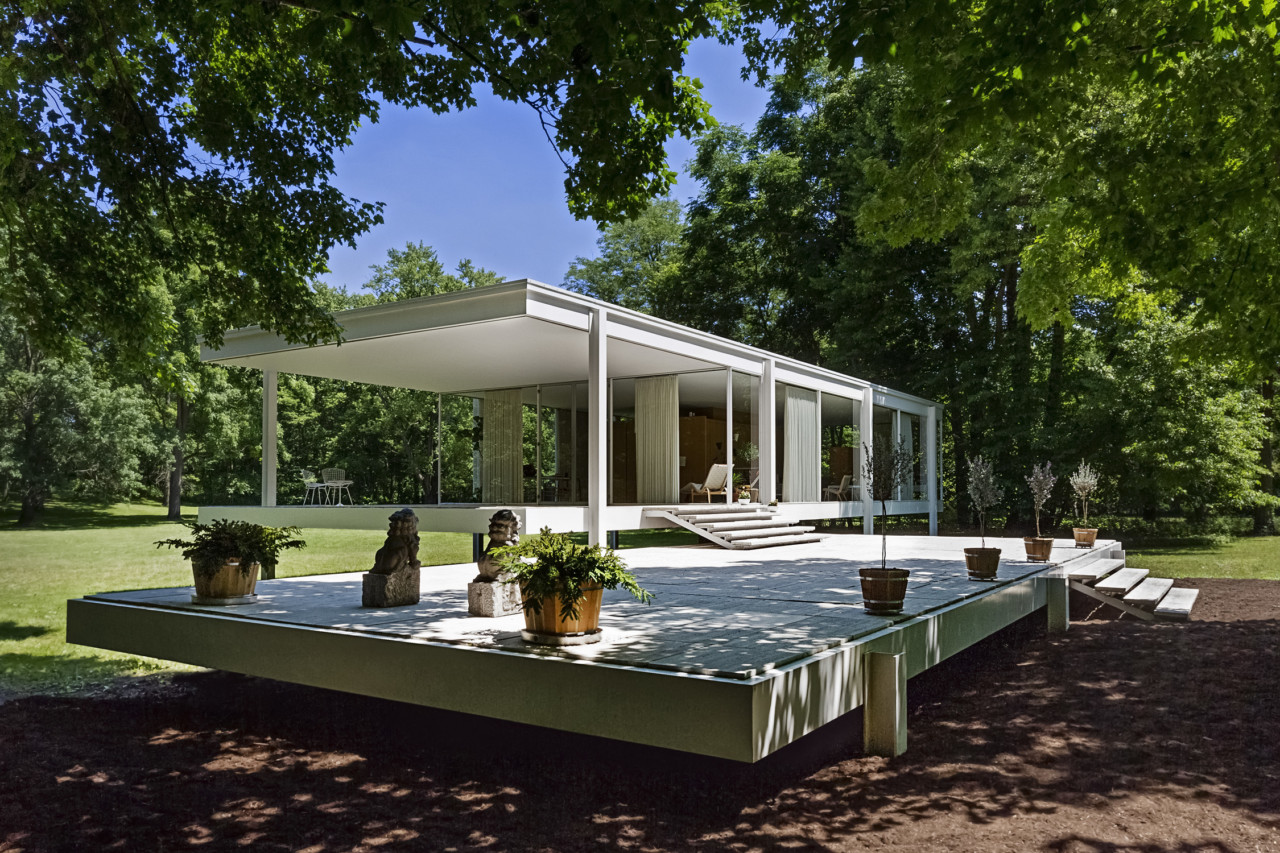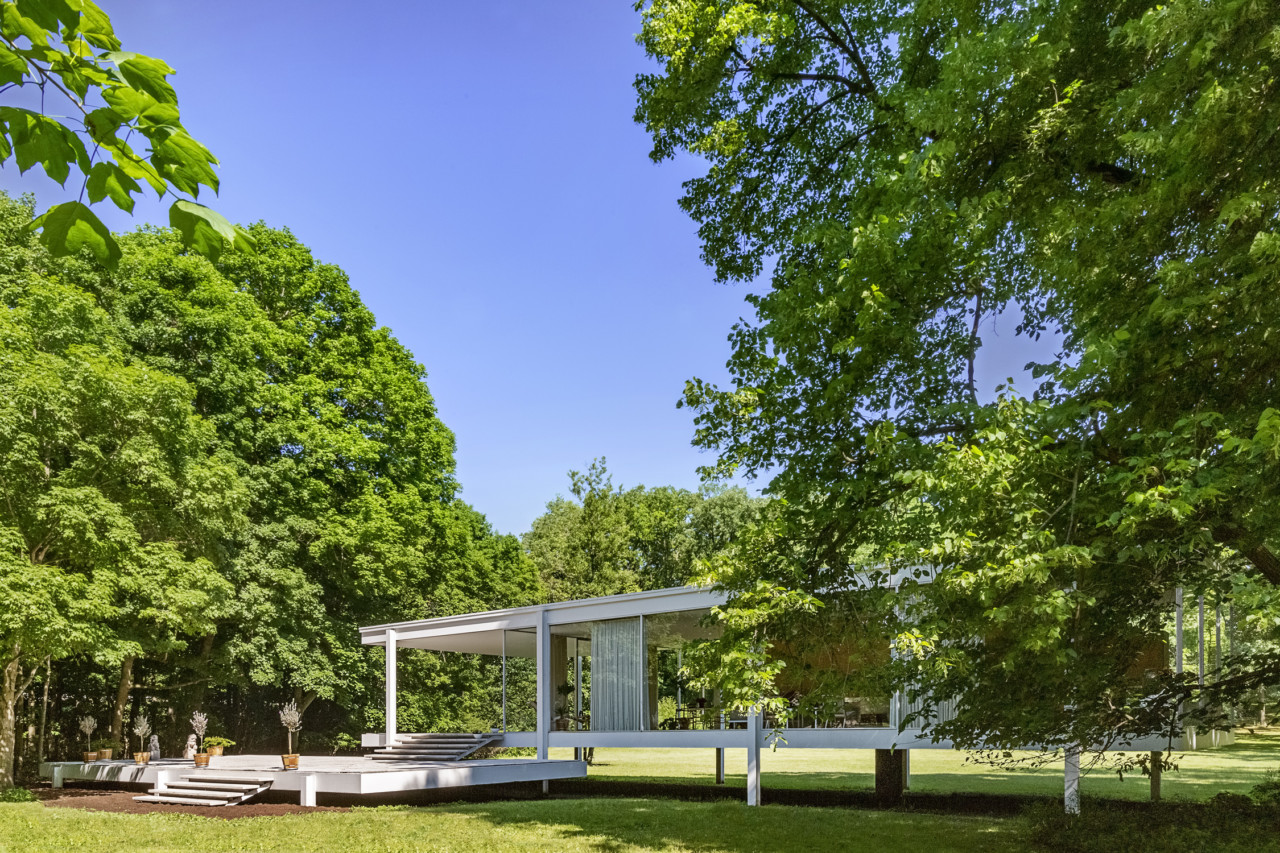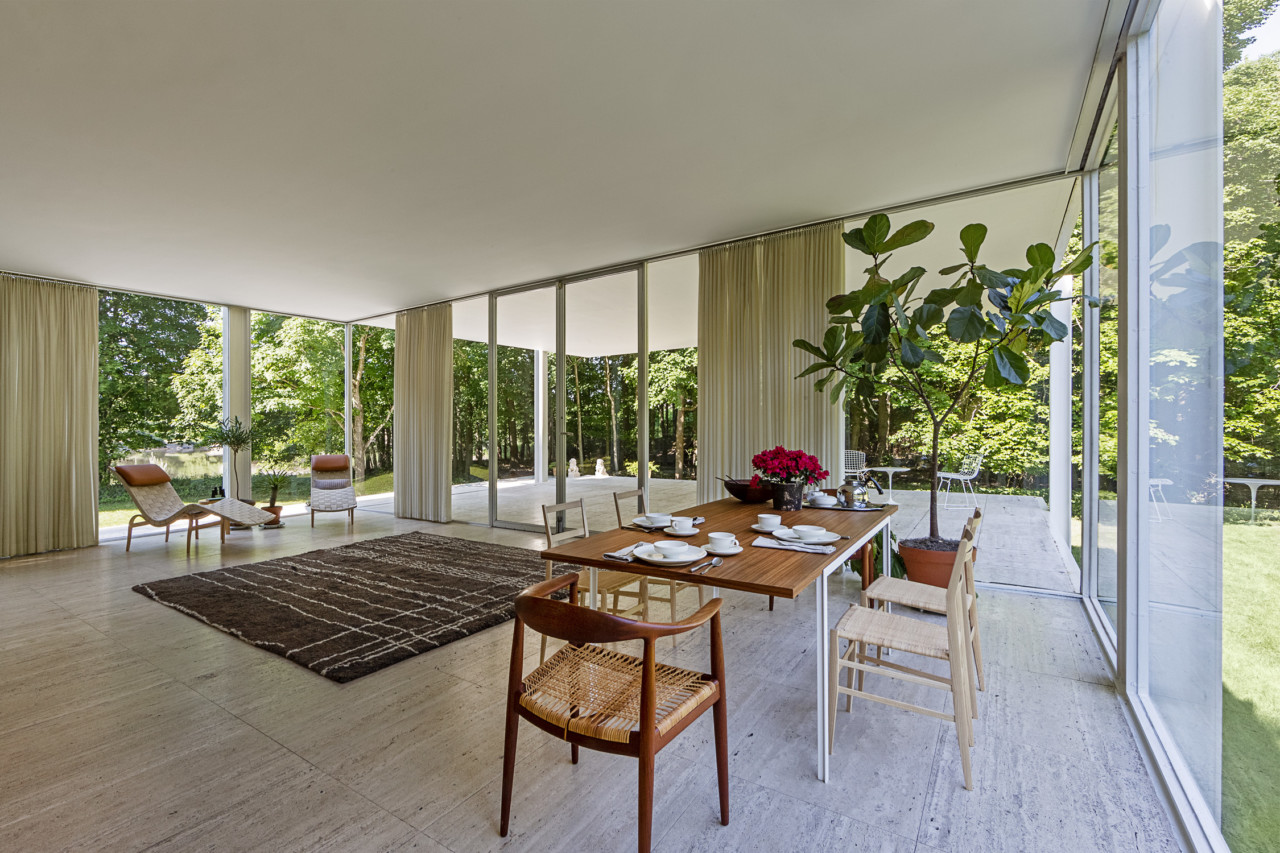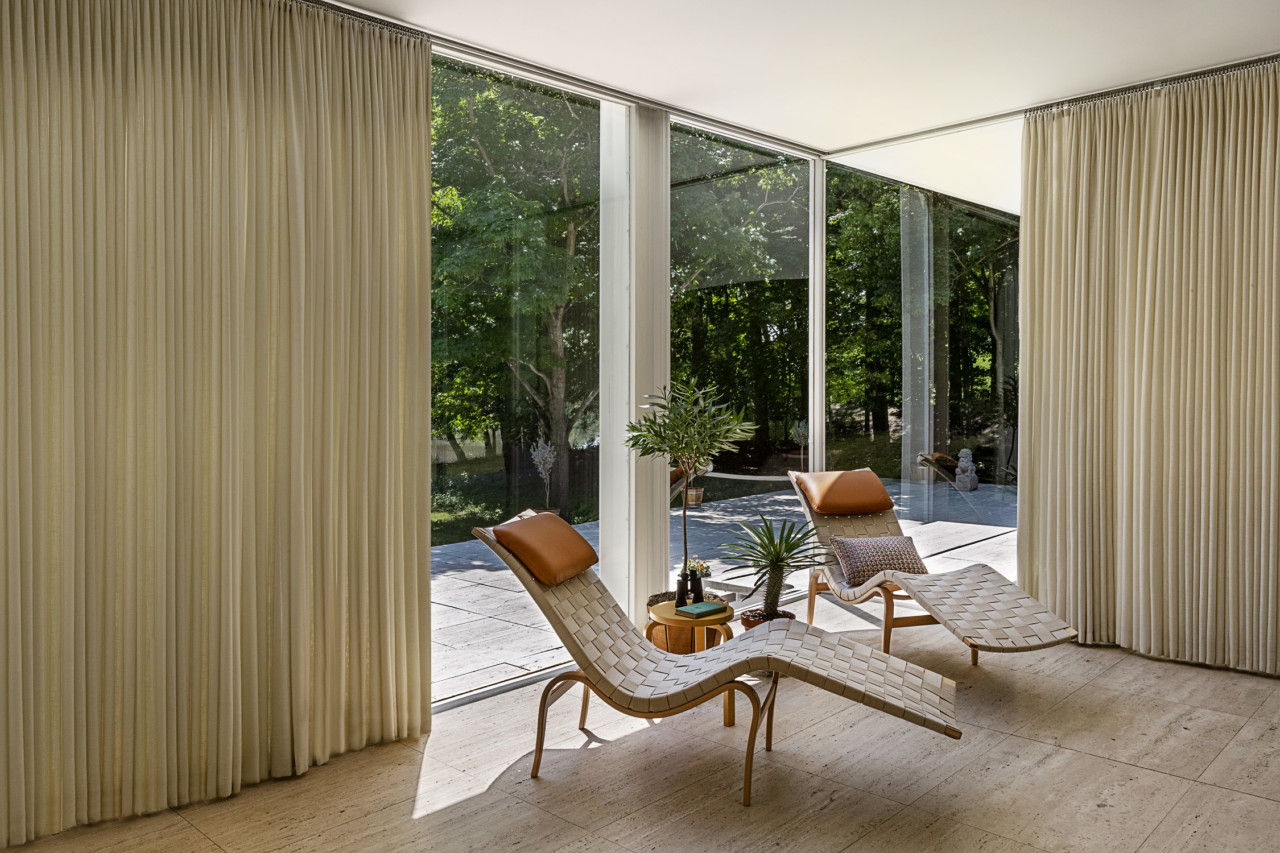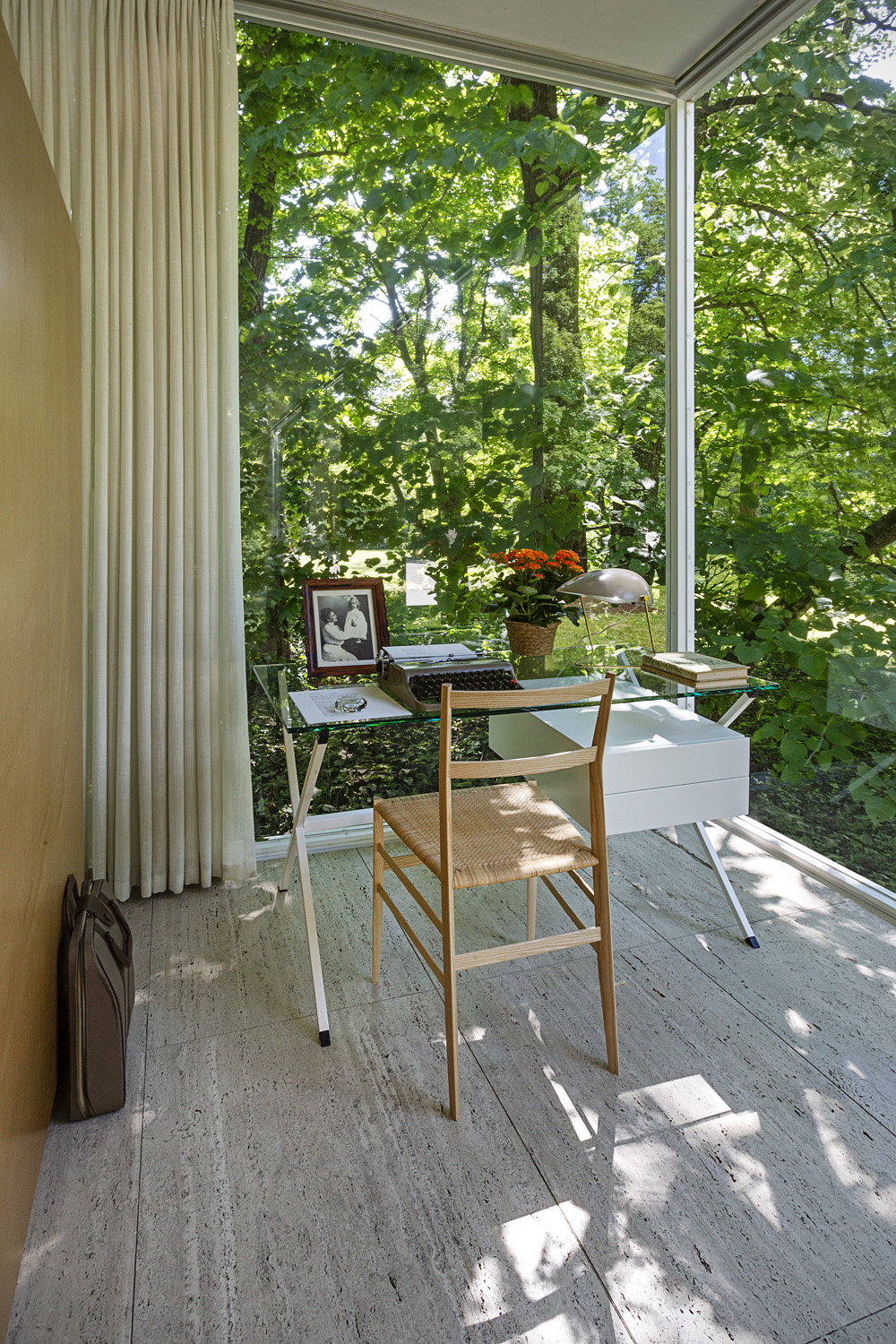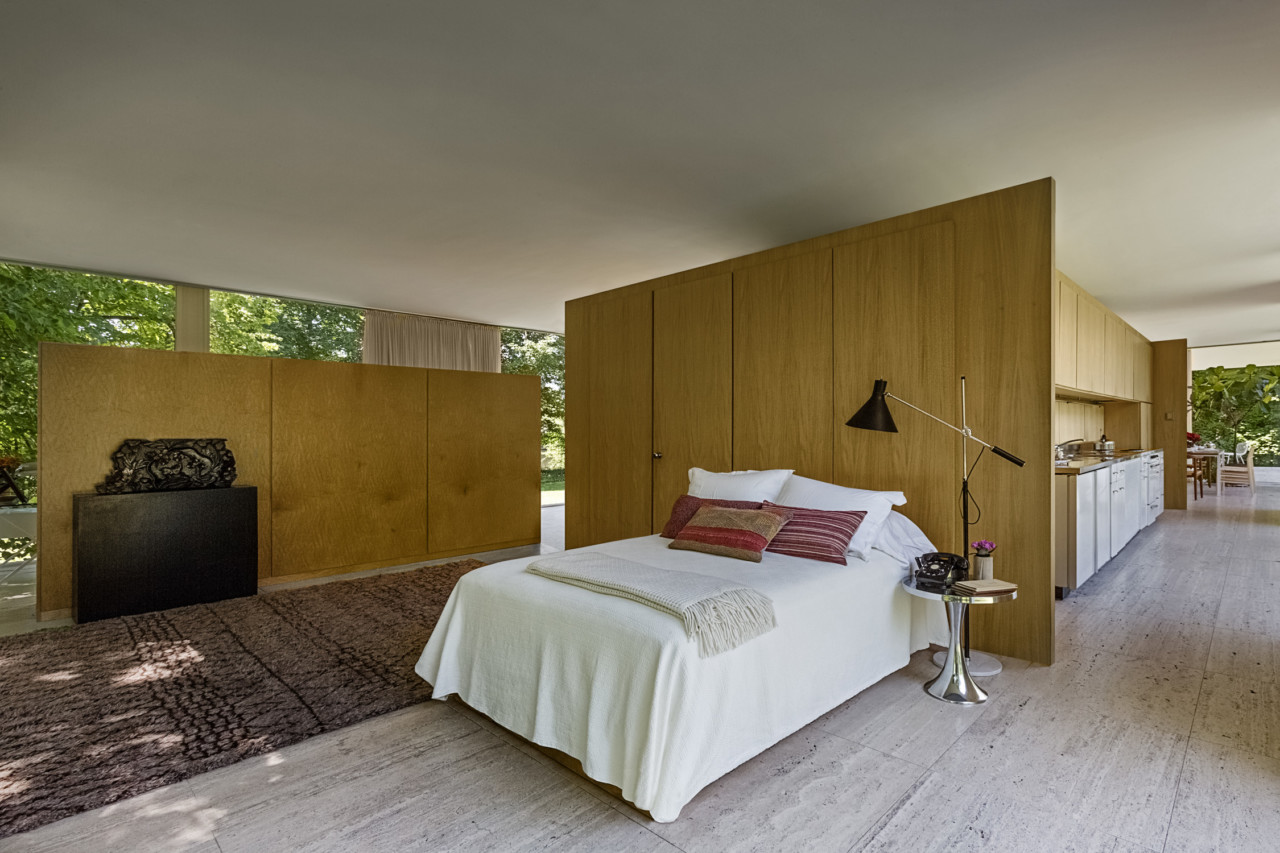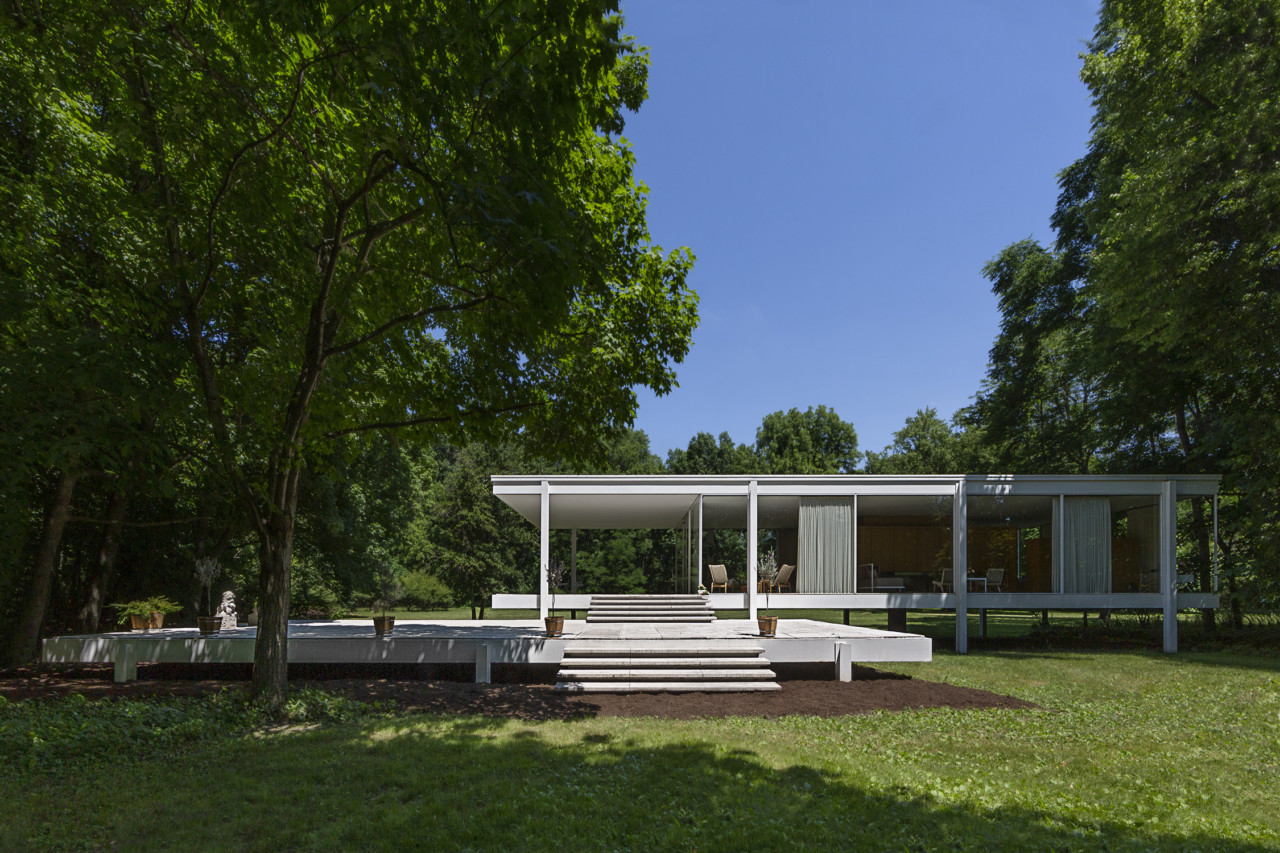The inner life of Edith Farnsworth remains something of a mystery. A woman of social standing in midcentury Chicago, her true identity would eventually be eclipsed by two names—her own (surname) and that of her architect, Mies van der Rohe. A new exhibition staged inside Edith’s eponymous, Mies-designed house in Plano, Illinois, attempts to fill the gaps in her story.
Seeking to flesh out its subject in greater detail, Edith Farnsworth Reconsidered is multi-partite, spreading out across the campus. The show begins in the visitors’ center, where a simple timeline of events carries visitors through the facts of Edith’s life: her affluent upbringing, her complicated relationship with the expectations placed on her by society and family and money, her quest to self-actualize. In the canonical house itself, Edith’s furnishings and decorations are reprised according to her liking, as documented in period photographs. An accompanying exhibit, An Untold Story: Farnsworth to Palumbo, 1968-1972, held in the Barnsworth Gallery, depicts the modernist bungalow as it changed hands from Farnsworth, who moved out in 1969, to English aristocrat and archiphile Peter Palumbo, who turned the house into a mausoleum, replete with Mies chairs. Palumbo later sold it to the National Trust for Historic Preservation in 2003.
In the commonplace telling of her story, the one murmured in the hallways of architecture schools after the history lecture is over, Mies appears as a centrifugal force, pulling Edith, objectified, into his orbit. There are stories of an affair, or possible affair, or maybe not an affair at all, but surely she was in love with him—the genius architect, 17 years her senior. How could she not have been?
Edith Farnworth Reconsidered rejects this narrative outright. Countering Edith’s typical objectification, the furniture in the house humanizes her. In one corner of the giant single-room dwelling are her Bruno Mathsson lounge chairs, positioned how she would’ve had them, with a book on the small table in between, and binoculars for bird-watching. In another, there is her desk, with a typewriter and a book of Italian poetry that she translated once she’d retired from her practice as a researcher and physician. A violin attests to her training in classical music. There are flowers and plants scattered about, silverware on the dining table, a bottle of vermouth on the kitchen counter. These items constitute Edith’s presence.
A new treatment for the landscape, spearheaded by Farnsworth House executive director Scott Mehaffey (who, with Robert Kleinschmidt and Nora Wendl, was also in charge of the interior retrofit) places benches throughout the grounds and restores paths for easy ambulation, giving nature a new presence, too, and bringing visitors closer to it.
Still, the sharpest presence is the house’s, and it cuts through everything. One can almost feel Edith struggling to be human—putting up her drapes, placing her two stone lions on the end of the first platform, listening to FM radio—in the face of such starkness. Mies’s architecture feels inescapable, and at times at war with Edith’s humanity.
The exhibit exudes a sense of wanting to reclaim her identity as a self-possessed, highly respected professional woman, with desires and wants and goals for her life. Well, of course she was, and of course she had them. She had agency in her relationship with Mies, too. Unfortunately, their intimacy meant that there was never a legal contract between them, so when disagreements about the cost of the house arose, the whole thing devolved quickly and wound up in court. The devastating effects of this are made clear in the materials on display at the visitors’ center, where excerpts from Edith’s unpublished memoirs punctuate the facts:
“The court hearings went on forever, futile, nasty, and infinitely tedious, in the old courthouse in Yorkville. ‘Remember that a lawsuit is only a method of settling a quarrel, by no means to be confused with a way of finding out the truth.’”
It’s possible that we won’t ever find out the full truth about Edith, either. But the pieces of her on display at Farnsworth give us a clearer picture than perhaps we’ve had before.






